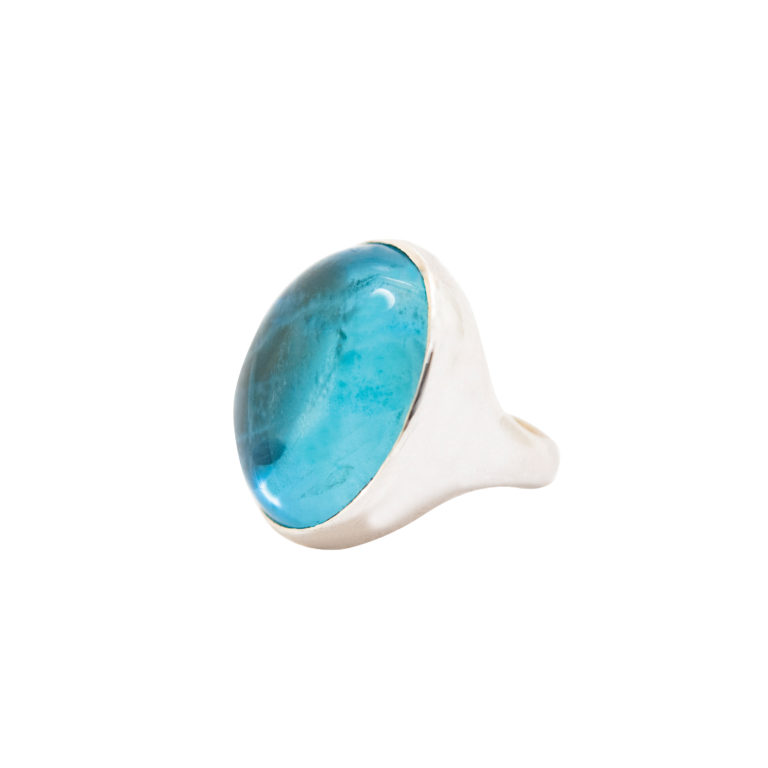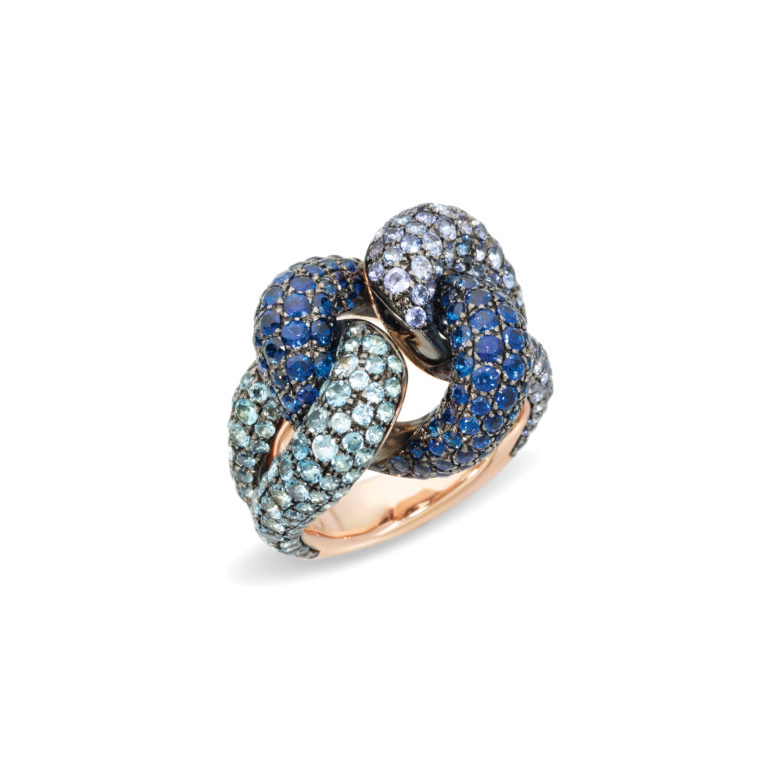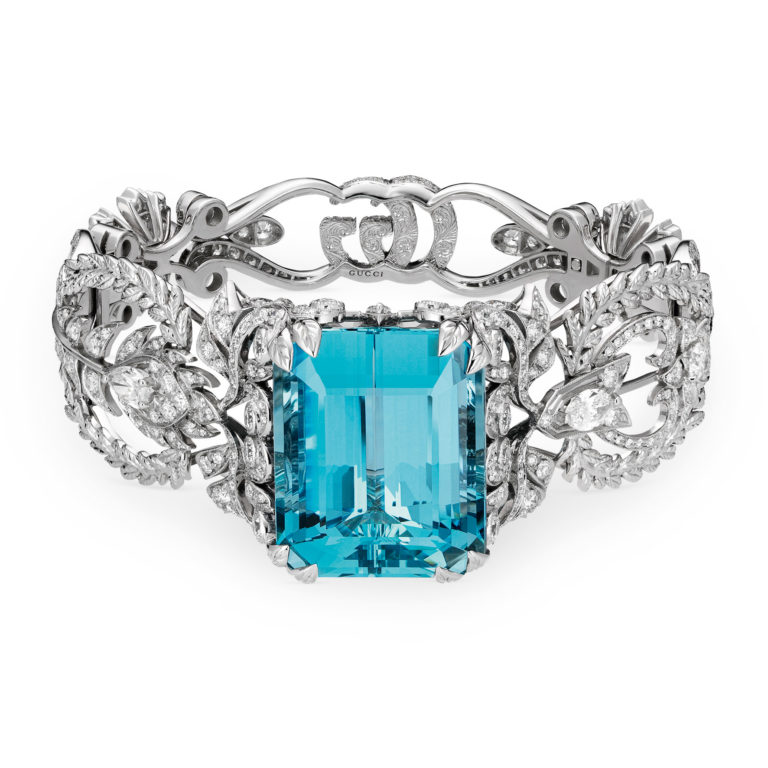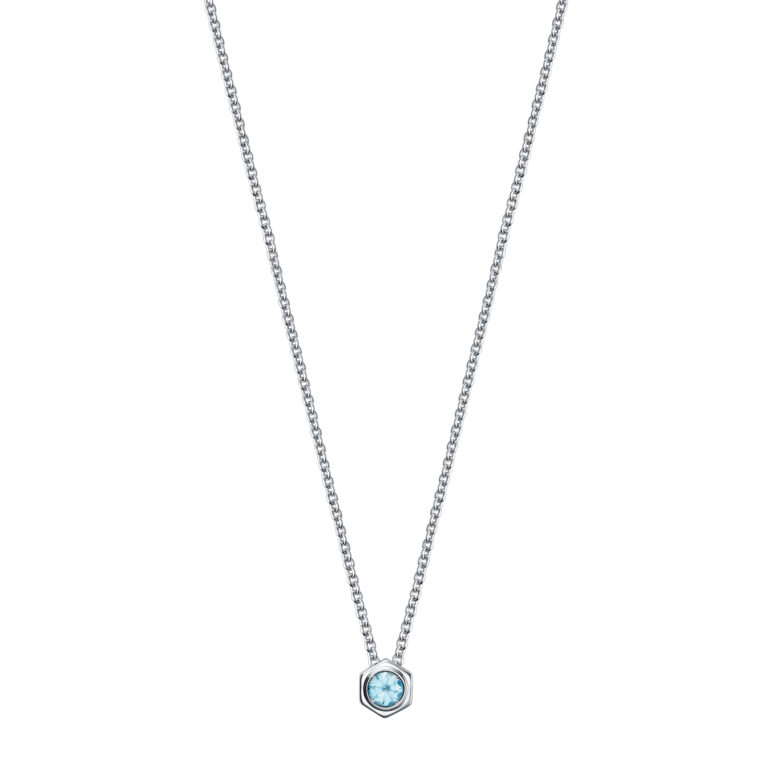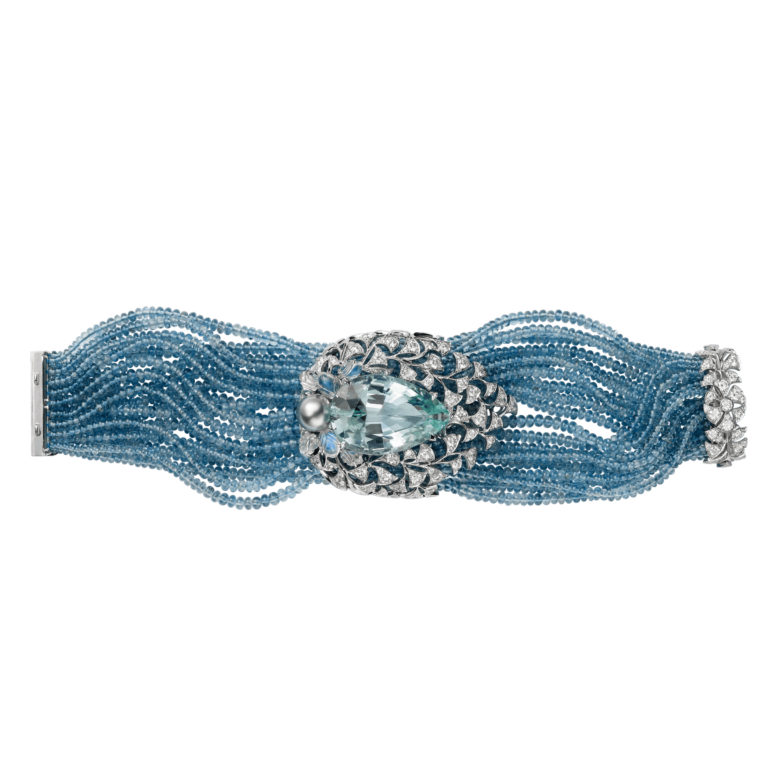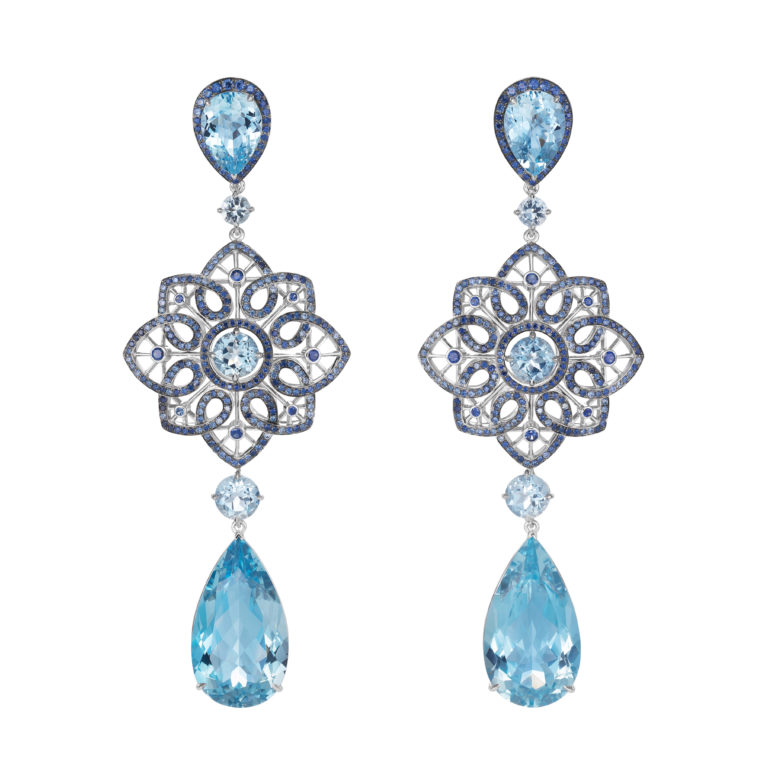[ad_1]
Photo by Steve Parsons – WPA Pool/Getty Images
As we approach the Duke and Duchess of Sussex’s two year wedding anniversary, we take a look at what makes aquamarines fit for a royal.
When Meghan Markle flashed an aquamarine ring from the passenger seat of a matching blue Jaguar being driven by new husband Prince Harry to their wedding reception, baby-blue gems zoomed to the top of the rock charts. But what should you know about the March birthstone, especially if you’re thinking of investing in one? The most crucial thing about aquamarines is whether the stone you’re about to buy is actually an aquamarine and not, for instance, a topaz or just lowly blue coloured glass. Confusion reigns among blue gemstones.
Aquamarine vs. Topaz vs. Glass
Naturally blue topazes are rare. And no one wants to be duped into buying a relatively cheap colourless topaz that has been radiation-treated into its blue hue. So, how can you tell the difference between an aquamarine and a blue topaz—or an aquamarine and blue glass?
Gems should be viewed under the right optical conditions. Put the stone against a sheet of white paper either in natural light or under fluorescent tube lighting. To the naked eye, an aquamarine will often have a slight greenish cast to it, which a blue topaz totally lacks. Another test: Aquamarines are pleochroic, which means they throw off different colours when viewed at different angles. If the stone you have in your hand emits the same colour no matter what angle you hold it at, it’s not an aquamarine. Surface nicks, scratches and bubbles trapped inside are signs that it’s a piece of glass. Aquamarines score between 7 and 8 on the Mohs scale (a scale that rates mineral hardness up to 10); glass scores about a 6. And lastly, there’s the temperature test. Aquamarines are poor thermal conductors, which is why they always feel cool in your hand. If you can get a hold of a diamond tester, it will accurately gauge thermal conductivity. If the stone conducts heat, it’s a topaz.
Where do they come from?
Aquamarine deposits can be found in China, Vietnam, India, Pakistan, Sri Lanka, the U.S., Madagascar and Mozambique. But the rich-blue ones from the Santa Maria de Itabira mine in Brazil are the gold standard; they’re known simply as “Santa Marias”—the term is even being used to describe any highly saturated aquamarine. To intensify their shade of blue, many are heat-treated to get rid of any yellow or green that might be present. Heat and radiation treatments are not bad or dishonest, per se, but the jeweller should inform you if the gem has undergone that kind of process.
Size vs. colour
With exceptions from mines in Nigeria, Mozambique and Madagascar, which are known for their small but intensely blue aquamarines, there is another rule of thumb: generally speaking, the smaller the stone, the lighter the blue. This is especially so because aquamarines that are cut in such a way as to keep most of their weight are also the bluest. So, small deep-blue stones are usually worth more per carat than bigger ones. Disparity in size and colour can also make for a mismatched design. In a piece with a big central aquamarine flanked by smaller ones, the centrepiece will likely be darker.
Ethical issues
There is also the question of the ethical origin of your aquamarine. Was it responsibly mined—meaning did the mining process include child labour or drastically harm the environment? Was it cut in surroundings that would not bring on silicosis, a lung disease that occurs when people breathe in crystal dust and particles? Did the trade of this aquamarine involve any criminal elements? These are questions you should ask. And if a Madagascan aquamarine has caught your eye, find out if it was cut at the Gemmological Institute of Madagascar, which teaches local people about the gem business, including how to cut.

The importance of cut
After clarity, carat and colour, cut also needs to be considered, since a good cut is what gives an aquamarine that “Markle sparkle.” Like Markle’s ring, which belonged to the late Princess Diana, a popular cut for aquamarines is the rectangular emerald, along with the oval and the pear. But because it’s not difficult to find a super-clear aquamarine, there are daring, virtuoso cuts—like the Asscher, the princess and the cushion as well as concave faceting—that really make a gem spark and fizz. A modified trillion cut, for example, gives the aquamarine a spectacular hall-of-mirrors effect. Aquamarines also come in sizable chunks, so an expert lapidary can innovate with all kinds of unique faceting, bevelling, polishing and grooving, but these are enormous and meant to be displayed, not worn. Many jewellers experiment with keeping aquamarines rough or only partially polished—slicing them up for necklaces, for example. In general, the best aquamarine cuts are those that follow the natural lines of the crystal.
Which aquamarines are the most valuable?
Aquamarines are part of the beryl family; this makes them cousins of the more coveted emerald, but aquamarines are no slouch in the value department either. On the other hand, their value is limited by the fact that there is so much aquamarine in the world. They grow in big clusters of clean hexagonal crystals that can be over 100 kilograms in size—which is why there’s no need to choose an aquamarine with flaws or inclusions. Nigerian aquamarines, for instance, tend to be more included, and these flaws can develop into fractures that can split the gem if it’s heated. So, it’s better to stick with clear-as-day blue stones.
There is a cool exception, though: cat’s-eye aquamarines, which are a rare anomaly of nature. Here, the flaw usually takes the form of parallel microscopic tubes inside the gem that are either hollow or filled with liquid. A good lapidary will cut the gem to showcase the flaw so that it has a satiny, striated cat’s-eye effect whenever it catches the light.
How to make them last
Aquamarines are pretty tough, but you should make sure they’re sturdily set, especially in wear-everywhere rings. Ultra-hard platinum settings are the best bet. Clean your aquamarine with warm soapy water, and keep it away from chemicals—even the ordinary household kind. Aquamarines are not especially light-sensitive, but if you like to spend long days on a hot, sunny beach, you will gradually overexpose the stone and some of its blue will be leached away. The same goes for high temperatures, so it’s best to leave your ring behind if you’re heading for the sauna.
Here are some of our favourite aquamarine pieces to add to your wish list (or your collection):
[ad_2]

